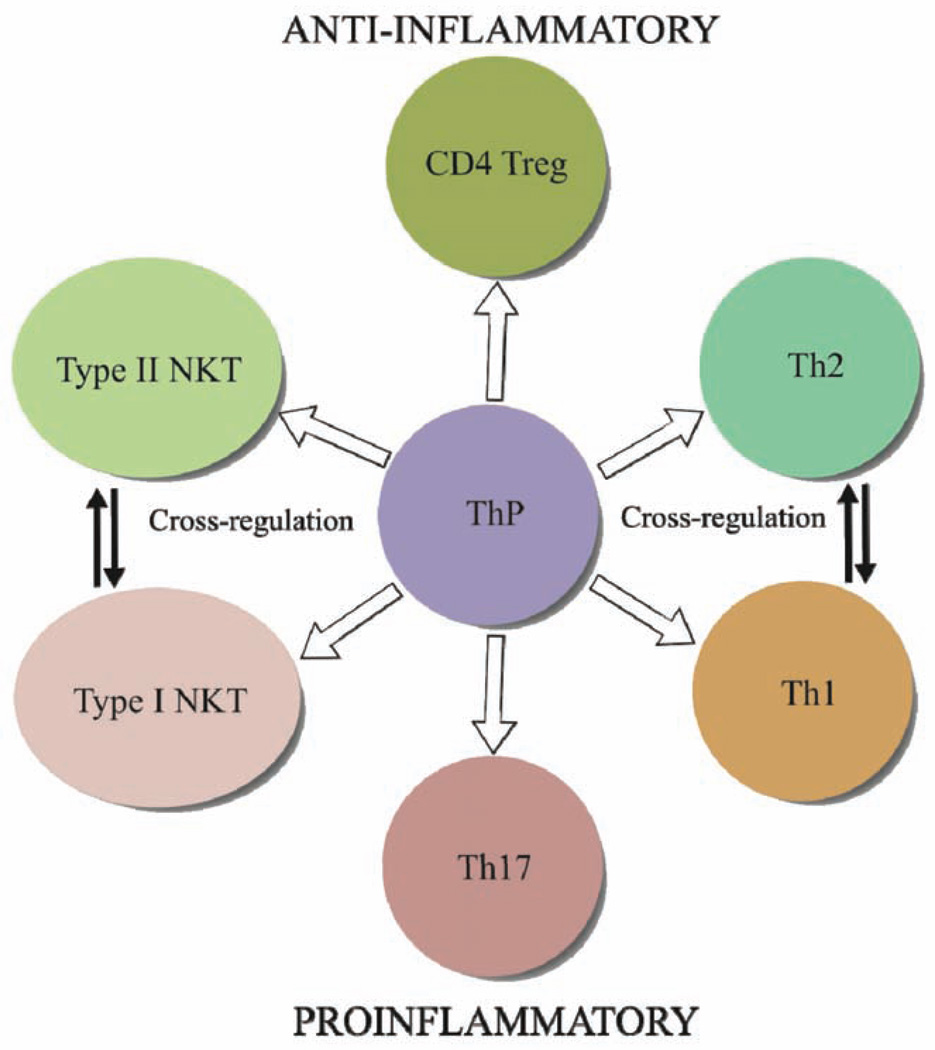Fig. 2.
A simplified scheme showing the generation of different Th lineages, CD4+ Treg as well as NKT cells from Th precursors (ThP). The development of different subsets is dependent upon the presence of different cytokines as well as engagement of specific transcription factors. The immune modulatory potential of Th subsets is also mediated by differential cytokine secretion profiles. FoxP3+CD4+ Treg cells could secrete IL-10 and TGF-β for anti-inflammatory response. Th1 and Th17 cells play a major role in the development of autoimmune diseases: while Th1 cells secrete IFN-γand TNF-α, Th17 cells secrete IL-17A, IL-17F, and IL-22. On the other hand Th2 cells can play antiinflammatory role by secretion of IL-4, IL-5, IL-10 and IL-13. Interestingly though both NKT subsets can release Th1 and Th2-like cytokines such as IL-4 and IFN-γ, type I NKT cells can generally play an inflammatory role while type II NKT are more often antiinflammatory. Th1 and Th2 cell cross regulate each other much like the NKT cell subsets via secretion of cytokines and modulation of antigen-presenting cells.

